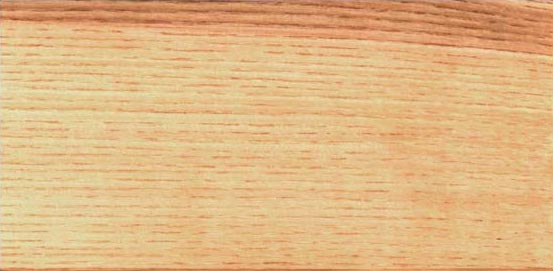 |
Ash
(rift cut veneer)
Environmental Profile
White ash is reported to be demonstrably widespread, abundant, and secure globally, although it may be quite rare at the periphery of its range (Source - The Nature Conservancy - Rank of relative endangerment based primarily on the number of occurrences of the species globally).
The North American range of White ash is reported to include New Brunswick, Nova Scotia, Ontario, Prince Edward Island, Quebec, Alabama, Arkansas, Colorado, Connecticut, Delaware, Florida, Georgia, Indiana, Kansas, Kentucky, Louisiana, Massachusetts, Maryland, Maine, Michigan, Minnesota, Missouri, Mississippi, North Carolina, Great Smoky Mountain National Park, Iowa, Illinois, Nebraska, New Hampshire, New Jersey, New York, Ohio, Oklahoma, Pennsylvania, Rhode Island, South Carolina, Tennessee, Texas, Virginia, Vermont, Wisconsin, and West Virginia. The tree prefers moist soils of valleys and slopes, particularly deep, well-drained loams. It is usually found growing with many other hardwoods.
Some material from this species is reported to be available from sustainably managed, salvaged, recycled, or other environmentally responsible sources.
African celtis (Celtis mildbraedii )
Santa maria (Calophyllum brasiliense )
Silver birch (Betula pendula ) Toughness
Brown sterculia (Sterculia rhinopetala ) Toughnesss
Australian blackwood (Acacia melanoxylon ) Impact
White ash is reported to be the largest and most important of the 18 Ash species that are native to the United States. Trees often attain heights of 70 to 80 feet (21 to 24 m), with trunk diameters of 24 to 36 inches (60 to 90 cm). Boles are are reported to be often straight and clear of branches to 30 to 50 feet (9 to 15 m).
The narrow sapwood is nearly white in color.
The heartwood is pale brown, grayish brown, light brown, or pale yellow streaked with brown. The color may also be cream to very light brown, occasionally with a reddish tinge.
The grain is described as bold, straight, moderately open with an occasional wavy pattern. Plainsawn boards usually have strong contrast in grain.
The material is normally coarse-textured.
The wood is reported to be lustrous.
Ash is reported to be typically free from taste and odor.
Air-seasoning is reported to occur at a faster rate than average, with very little shrinkage. Kiln-drying yields satisfactory results, but low initial temperates are required.
Drying degrade common in this species include gray-brown sapwood stains (sticker marks, stains), and surface checks (in 6/4 and thicker stock). These are attributable to trees from wet sites, drying too slowly. Distortion and end-splitting may also occur, and existing shakes may open up.
T8-B4 (4/4), T5-B3 (8/4) US
White ash is reported to have good dimensional stability, and is superior to Red oak in this property.
1.63
This indicator is more meaningful if it is used together with other drying information and actual shrinkage data in the tangential and radial directions. (Refer to the Numerical Values window).
The heartwood is reported to have little or no natural resistance to attack by decay causing organisms and insects. The sapwood is also susceptible to attack by powder post beetle and fungi.
The wood is reported to respond well to preservative treatment.
Ash is used to manufacture plywood and some logs are sliced into decorative veneers for paneling and furniture uses.
There is very little cutting resistance.
There is moderate blunting effect on cutting tools.
The wood is fairly easy to plane.
Turning properties are reported to be rather poor.
The wood is characteristically very easy to bore.
Mortising properties are reported to be poor.
Under controlled conditions, Ash is reported to glue with satisfactory results.
White ash is reported to possess good resistance to splitting, and has good nail-holding properties.
The timber has fairly good screwing properties.
The wood is reported to have satisfactory sanding characteristics.
Polishing qualities are reported to be good.
The wood has good staining characteristics and is often finished in black.
The wood has satisfactory varnishing qualities.
Painting properties are reported to be satisfactory.
The wood has satisfactory or fairly good steam bending characteristics.
The wood works well with hand tools.